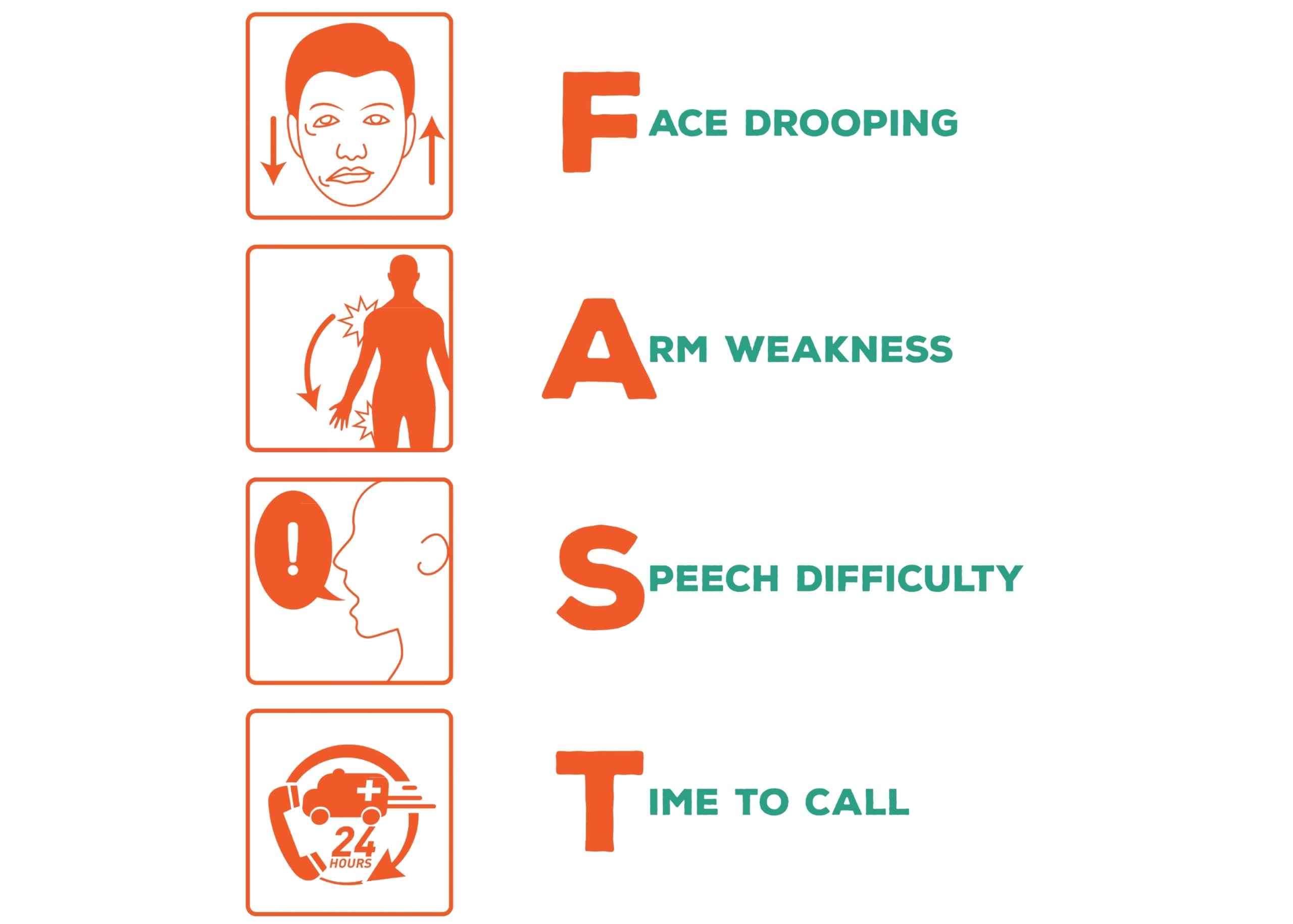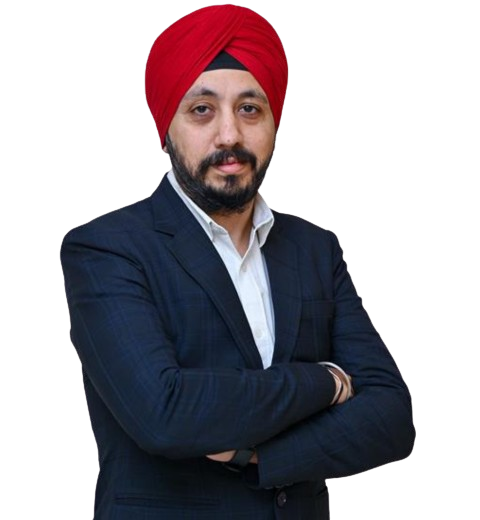What is a Stroke?
A stroke is a sudden, severe disruption of blood flow to part of the brain. Strokes can cause brain damage, ranging from mild to severe, depending on where they occur and how long they last.
What are the Types of Stroke?
There are two main types of stroke: ischemic and hemorrhagic.
Ischemic Strokes occur when a blood clot (thrombus) blocks the blood flow to the brain. Ischemic strokes can be further divided into two types: thrombotic and embolic.
- A thrombotic stroke occurs when a clot forms on top of another clot inside an artery in your brain.
- An embolic stroke occurs when a clot travels through your bloodstream from somewhere else or outside your body (such as from a piece of plaque).
Hemorrhagic Strokes occur when a weakened blood vessel ruptures and bleeds into the brain. Hemorrhagic strokes can also be divided into two types:
- Intracerebral Hemorrhage (ICH) occurs when a weakened blood vessel ruptures and bleeds into the brain tissue.
- Subarachnoid Hemorrhage (SAH) occurs when a weakened blood vessel ruptures and bleeds into the space between your brain and skull.
What are the Symptoms of Stroke?
Stroke symptoms vary among individuals and can also change throughout a stroke.
- Some of the most common symptoms include:
- Sudden numbness or weakness on one side of the body
- Pain in the shoulder, arm, or leg on one side of your body
- Dizziness and loss of balance
- Trouble speaking or understanding speech
- Vision changes such as blurring or double vision
What Causes Stroke?
A stroke occurs when blood flow to your brain is blocked by a clot or a blood vessel in your brain bursts. This causes brain cells to die, resulting in paralysis, speech problems, and thinking difficulties. Several factors can cause a stroke, including:
- Aneurysms: An aneurysm is a bulge in the wall of a blood vessel; when this bulge bursts, it can cause a stroke
- Arterial blockages: sometimes cholesterol can build up inside arteries and form plaques, which can block blood flow to parts of the body, including the brain
- Carotid artery disease: this occurs when plaque builds up on the carotid artery (the main artery in your neck), causing narrowing or blockage of blood flow
- High blood pressure: high blood pressure can cause arteries to enlarge and become weak; these weakened arteries are more likely to form clots that can cause stroke
- Brain tumors: these growths also increase your risk of having a stroke
What are the Five Stages of a Stroke?
The five stages of a stroke are:
- Flaccidity is where the muscle is not working correctly and cannot be moved.
- Spasticity appears when the affected muscle spasms and contracts, leading to severe pain.
- Increased Spasticity, where the spasms increase in frequency and intensity.
- Decreased Spasticity, where the spasms begin to decrease in frequency and intensity.
- Spasticity Disappears, and Coordination Reappears, where coordination returns and movements become more fluid again.
How are Stroke Diagnosed?
The most common way to diagnose stroke is through a CT scan, showing blocked blood vessels and bleeding. If an artery blockage causes the stroke, the CT scan can also show if there’s any bleeding in the brain. A second test that may be used to diagnose a stroke is an MRI, which uses magnetic waves instead of radiation as a CT scan does. The MRI can show bleeding in the brain or spinal cord.
What are the Risk Factors?
The risk factors of stroke are:
- Age: Risk increases with age. About 80% of all strokes occur in people over the age of 65. Stroke can occur in younger people, but it is less likely.
- Diabetes: People with diabetes are more likely to have a stroke than those without diabetes.
- Cardiovascular disease: People with cardiovascular diseases such as high blood pressure or high cholesterol are more likely to stroke than those without heart disease.
- Family history: If someone in the family has had a stroke, the risk of having one is higher than average.
- Smoking: Smokers are twice as likely to have a stroke as non-smokers. It also increases the chances of having a heart attack or heart disease by three times. Cigarette smoke can increase inflammation throughout the body, developing these conditions over time.
What Does the Treatment Involve?
A five-year study by the National Institute of Neurological Disorders and Stroke (NINDS) found that some stroke patients who received t-PA within four and half hours of the start of the symptoms were at least 30 percent more likely to recover with little or no disability after three months.
The treatment depends on which part of the brain has been damaged and how severe the damage is. Here are some common treatments:
- medications to help reduce swelling in the brain
- medicines to lower cholesterol levels and blood pressure
- medicines to thin the blood (also called blood thinner)
- surgery to remove part of the clot or repair an artery that is causing bleeding
What is the Role of Endovascular Intervention in Stroke?
The role of endovascular intervention in stroke is to treat it by opening up an artery that a blood clot has blocked. There are two types of endovascular interventions: thrombectomy and stent retrieval.
Thrombectomy is a procedure that removes the clot and restores blood flow through the affected artery. In this procedure, the clot is removed using a thin tube called a catheter inserted into the neck or groin area. A device called an aspiration catheter is then inserted through the catheter and used to suck out the clot. Once all of the clots have been removed, a stent (a small metal coil) may be inserted into the vessel to keep it open as it heals.
Stent Retrieval is similar to thrombectomy, except that instead of removing any clots, your doctor will remove all or part of a stent that was placed during prior stenting procedures to unblock the blood flow to your brain.
Do All Patients Need Rehab?
Rehabilitation is restoring an individual’s ability to perform daily activities and regain independence. It includes physical, occupational, speech, and other therapies to help improve mobility and function. It is a major cause of disability, and rehabilitation is essential to prevent long-term complications such as loss of mobility and cognitive impairment.
How Long Does it Take to Rehab After a Stroke?
Stroke rehabilitation is a long process, and it’s essential to understand that everyone is different.
Most people spend between 1 and 2 weeks in the hospital after having a stroke. During this time, the patient will receive medical care and begin to learn about how it affected their body. The patient may also be given physical or occupational therapy to help them regain strength, coordination, and motor skills.
After leaving the hospital, the patient will probably go through stroke rehabilitation at home or in a specialized facility for up to 6 months. The length of time it takes for someone’s brain function to fully return depends on several factors:
- The location and severity of the damage caused by the stroke
- How quickly treatment begins after a person experiences symptoms (this can mean being able to reach out for help before they become severe enough that they require emergency care)
- Their age at the time they had their stroke (the older someone is when they experience their first attack, the more likely it is that they will have lasting effects from it)
What Rehabilitation is Needed After a Stroke?
Stroke rehabilitation involves physical, occupational, and speech therapy to help you recover as much function as possible. The goal is to get you back on your feet as soon as possible so you can resume your life as normal.
Physical therapy focuses on building strength and flexibility in muscles affected by the stroke.
Occupational therapy helps people relearn everyday tasks like dressing and eating with proper technique or safety measures to prevent further injury. Speech therapy helps patients regain their ability to communicate verbally using a variety of modalities, including sign language for those who are deaf or hard of hearing.
How Can it be Prevented?
Because stroke causes permanent damage to the brain, it’s essential to do everything you can to prevent strokes from happening. Here are some tips for preventing it:
- Maintain a healthy weight
- Eat healthy foods
- Drink alcohol in moderation or not at all
- Avoid smoking or chewing tobacco
- Get regular exercise
- Quitting any medication that could increase the risk
When it Comes to Spotting a Stroke, BE FAST.
When it comes to spotting a stroke, BE FAST.
B-Balance: Is the person steady when they walk? Do they have a wide-based gait? (They may be at risk for falling.)
E-Eye: Is one eye drooping? Is the person having trouble reading or seeing out of one eye?
F-Face: Does the face look asymmetrical? Are the corners of the mouth drooping on one side? Or is their mouth twisted on one side?
A-Arms: Can they raise both arms and keep them there without help? Can they make a fist with either hand? Can they clench their fingers tightly in front of them? If not, they may have weakness in their arms or hands.
S-Speech: Are they slurring their words or speaking too fast or too slow? Does their speech sound normal or different than usual?
T-Time: It is a severe medical condition that requires immediate attention. If you or your loved ones have any warning signs of stroke, call 998 immediately and get to the hospital as soon as possible.
Medeor Hospital is dedicated to providing comprehensive patient care, including treatment, rehabilitation, and follow-up care. We have a team of expert Neurologists and multi-disciplinary specialists who work together to provide world-class medical care for our patients. We aim to ensure that every step of your recovery is handled with the utmost care and attention.







